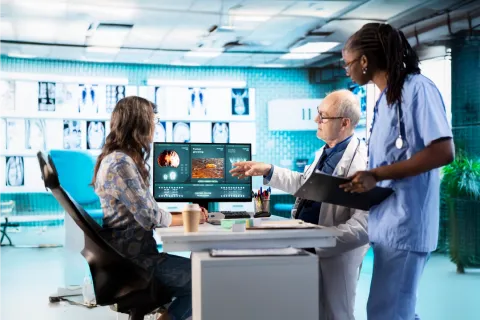
Complaint handling is an integral part of medical device companies’ Quality Management System (QMS). It involves receiving, investigating, and resolving customer complaints related to medical device products and services provided by an organization. Such complaints are related to the safety, performance, or effectiveness of medical devices, as per ISO 13485. Companies must address complaints promptly and effectively to maintain customer satisfaction and uphold Regulatory compliance. In this blog, we shall explore the significance of complaint handling, its proper procedure, and the Regulatory requirements as addressed in ISO 13485.
The Importance of Customer Handling as Per ISO 13485: 2016
A company’s QMS must effectively address customer complaints. Failure to handle complaints efficiently can risk customer satisfaction, impact the company’s reputation, and result in Regulatory non-compliance. Complaints help you identify improvement areas, and analysis of customer feedback may help you uncover recurring issues with specific products or even a particular manufacturing process. In fact, timely and accurate feedback supports continuous improvement while minimizing the impact of complaints on business operations and product quality.
Requirements for Customer Handling as per ISO 13485: 2016
Clause 7.2.1 of ISO 13485 emphasizes the significance of customer-related processes by stating that organizations must establish systems that include “communication with customers and feedback from customers, including complaints.” This clause requires companies to record customer feedback, review the feedback, and enhance their product/service accordingly, thereby increasing customer satisfaction.
Clause 8.2.1 states that organizations should “establish, implement, and maintain procedures for addressing complaints received from customers.” This clause mandates that companies must have a complaint-handling process, including problem identification, recording of complaints, and methodical investigation to determine the root cause of problems. Organizations should use the findings from the process to implement corrective actions or if required, a re-evaluation of their device.
Procedure to be Implemented for Complaint Handling
Companies must establish a robust complaint-handling procedure within their QMS in accordance with the applicable Regulatory requirements, such as the EU MDR 2017/745 and 21 CFR 820.198 in the US. Having a formalized procedure ensures that complaints are managed in a structured manner, thereby minimizing the risk of similar complaints recurring and escalating to non-conformance issues or Regulatory non-compliance. Based on the results of complaint handling, further requirements of reporting to Regulatory authorities are determined (ISO 13485:2016 Clause 8.2.3).
Record all Complaints
Each complaint should be tracked, including the type of the problem, the date on which it was reported, and the disposition of that complaint. Complaints should also be categorized once they are reported, and any possible product-related complaint requiring urgent investigations should be handled promptly.
Investigate Complaints
Identify the root cause of a complaint and prevent recurrence. Ensure that all the stakeholders are aware of the current state of the investigation and the findings are documented.
Determine the Corrective Action to be Taken
After the investigations are complete and the root causes have been identified, corrective action should be taken wherever necessary. Ensure that all the concerned departments and stakeholders are aware of the corrective action decided upon. Any such action taken should be documented, including the reason for taking the action and how it will be implemented. The corrective action should also be communicated internally across all levels of the organization that may be impacted by the change.
Evaluate the Effectiveness of the Corrective Action
The effectiveness of the corrective action should be assessed to ensure that it addresses the root cause of the complaint and that the issue does not recur. The evaluation should be documented, including the measures taken to determine the effectiveness of the corrective action.
Follow-up with the Customer
Organizations must inform the customers of the outcome of the investigation, what corrective action, if any, has been taken, and the measures taken to prevent a recurrence of the same issue. The details of the actions taken should be documented.
In conclusion, complaint handling is a crucial component of a medical device company’s QMS. By implementing a compliant handling process, companies can minimize the risk of complaints escalating to a point where they count as Regulatory non-compliance. The data from customer complaint handling serves as input to Post-market Surveillance (PMS). Companies should review and update their complaint handling processes regularly to ensure that best practices are incorporated and that the process remains effective and efficient. By ensuring that the complaint-handling process is well-managed, an organization can gain valuable insights from their customers’ experience, which will, in turn, lead to ongoing improvement in the quality of their medical devices and services.
Would you like to know more about medical device complaint handling as per ISO 13485:2016? Get in touch with our Regulatory experts. Stay informed! Stay compliant!









